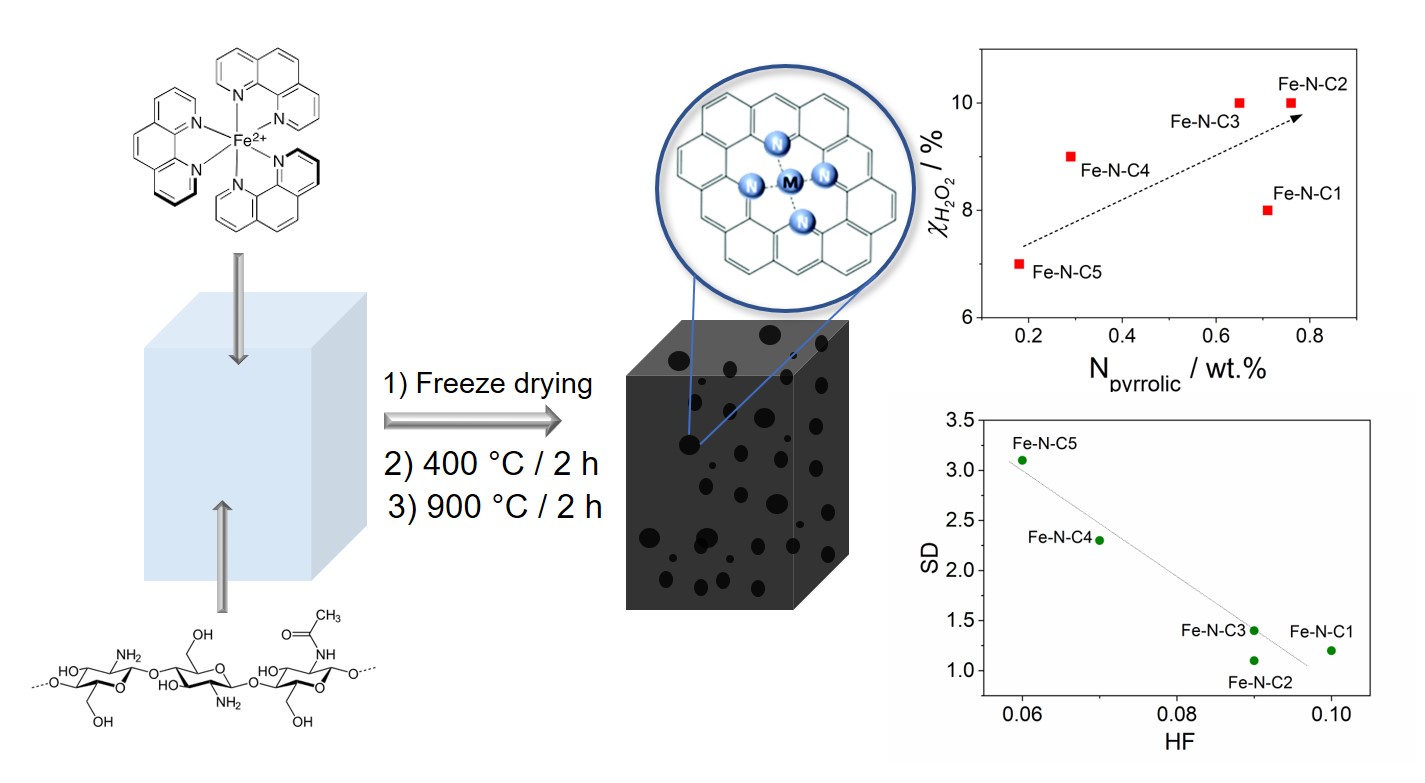The development of platinum group metal-free (PGM-free) electrocatalysts derived from cheap and environmentally friendly biomasses for oxygen reduction reaction (ORR) is a topic of relevant interest, particularly from the point of view of sustainability. Fe-nitrogen-doped carbon materials (Fe-N-C) have attracted particular interest as alternative to Pt-based materials, due to the high activity and selectivity of Fe-Nx active sites, the high availability and good tolerance to poisoning. Recently, many studies focused on developing synthetic strategies, which could transform N-containing biomasses into N-doped carbons. In this paper chitosan was employed as a suitable N-containing biomass for preparing Fe-N-C catalyst in virtue of its high N content (7.1%) and unique chemical structure. Moreover, the major application of chitosan is based on its ability to strongly coordinate metal ions, a precondition for the formation of Fe-Nx active sites. The synthesis of Fe-N-C consists in a double step thermochemical conversion of a dried chitosan hydrogel. In acidic aqueous solution, the preparation of physical cross-linked hydrogel allows to obtain sophisticated organization, which assure an optimal mesoporosity before and after the pyrolysis. After the second thermal treatment at 900 °C, a highly graphitized material was obtained, which has been fully characterized in term of textural, morphological and chemical properties. RRDE technique was used for understanding the activity and the selectivity of the material versus the ORR in 0.5 M H2SO4 electrolyte. Special attention was put in the determination of the active site density according to nitrite electrochemical reduction measurements. It was clearly established that the catalytic activity expressed as half wave potential linearly scales with the number of Fe-Nx sites. It was also established that the addition of the iron precursor after the first pyrolysis step leads to an increased activity because of both an increased number of active sites and of a hierarchical structure, which improves the access to active sites. At the same time, the increased graphitization degree, and a reduced density of pyrrolic nitrogen groups are helpful to increase the selectivity toward the 4e- ORR pathway.

